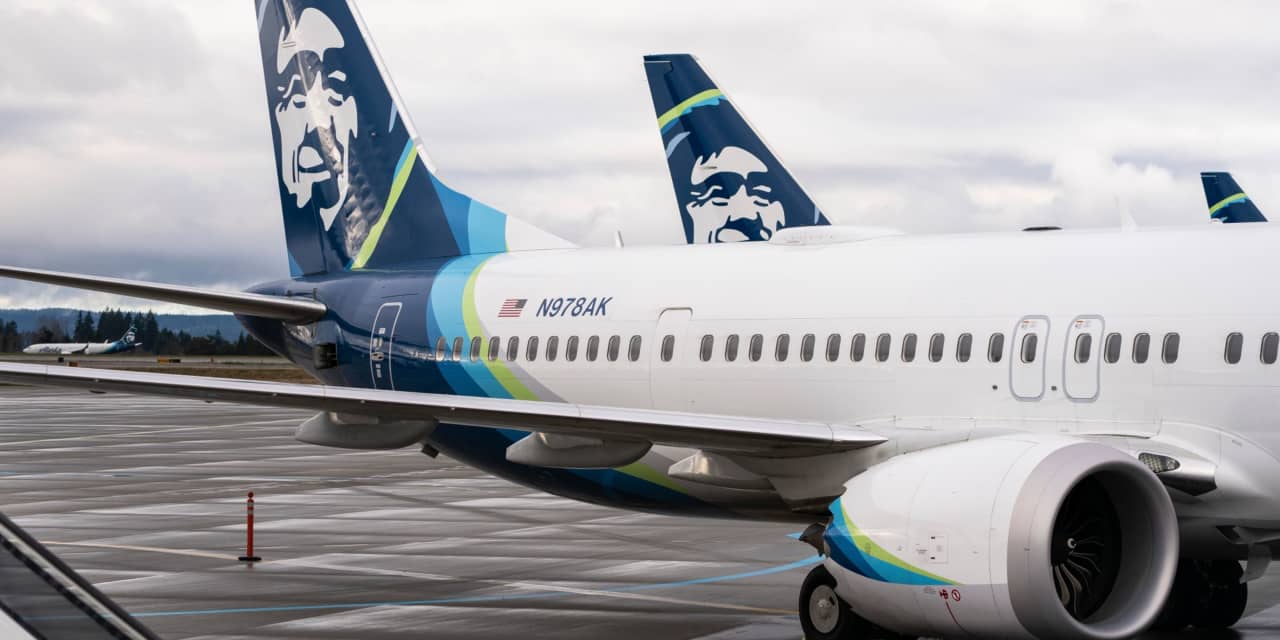The 737 MAX 9 is back in service, about three weeks after the Federal Aviation Administration grounded the jet following the midair blowout of an emergency door plug on an
Alaska Air
flight.
Three weeks doesn’t sound so bad, but the damage done to
Boeing
shares can’t be measured by the relatively short delay in airline service and aircraft deliveries. The 737 MAX 9 door plug incident has added a lot more uncertainty for investors.
Investors hate uncertainty.
Saturday,
United Airlines
Flight 1525 from Newark to Las Vegas departed at 10:30 a.m. local time and was the first United passenger flight on a Boeing MAX 9.
Alaska Air
completed the first flight of a MAX 9 post-grounding on Jan. 26.
The three-week delay shouldn’t impact Boeing’s 2024 aircraft deliveries, or production all that much. The compensation paid to airline customers who lost out on sales by having part of their fleets grounded likely amounts to some $60 million, based on Wall Street estimates. That’s only 1% of analysts’ forecasted 2024 free cash flow of some $6 billion, according to FactSet.
Boeing stock, however, is down about 17% since the grounding while the
S&P 500
and
Nasdaq Composite
have added roughly 4% and 6%, respectively, over the same span. The dip has wiped out some $26 billion in market value. The $26 billion and $60 million don’t seem to align. Investors are worried about more than just airline compensation.
For starters, the FAA said it won’t allow Boeing to expand MAX production until the agency is satisfied with Boeing’s quality systems. Boeing wants to ramp production from roughly 38 jets a month to 50-plus jets a month in the coming two years. Maybe it can, even with added FAA oversight. But investors can’t be sure. That’s added uncertainty—and a slower production ramp puts 2025 and 2026 free cash flow estimates at risk.
The FAA also hasn’t certified two versions of the MAX yet—the shorter MAX 7 and the longer MAX 10. How the grounding impacts the certification is also hard for investors to say. More uncertainty.
Airlines have ordered 391 MAX 7s and 1,180 MAX 10s. Orders for MAX 8 and MAX 9—the two certified MAX versions—are roughly 5,800 and 440, respectively, according to Boeing’s commercial website.
The MAX 9 incident has United Airlines management questioning its MAX 10 orders. The airline doesn’t have a lot of options to change—both Boeing and
Airbus
have 10-plus years of single-aisle jet production in backlog at current build rates. Still, customer questions equal even more uncertainty. None of this is what Boeing investors want to hear.
The MAX 10 competes with the Airbus A321neo. Airlines have ordered almost 6,200 A321neos and about 1,250 have been delivered. It’s been a bigger commercial success than the MAX 10 so far.
The MAX 9 problems, combined with FAA oversight and customer comments, will reignite the debate about whether or not Boeing should design a brand new MAX 10/A321-sized jet. Something that’s not a 737. It could be a solution for Boeing, but a new plane is a near-decade-long process that will cost billions of dollars.
Boeing is facing a lot of questions. The job for Boeing management in the coming months is to quell uncertainty. For starters, that means no more incidents. That might not be easy to do, but whatever steps the aircraft maker can take it should take.
After that, Boeing has to, essentially, undo all the damage of the past three weeks. It has to get 737 production expanded—or at least explain to investors how long it will take. It has to get the MAX 7 and MAX 10 certified—or at least explain to investors how long that will take. After those things are done, discussions of a new aircraft can come.
It’s a lot to manage, but this is the situation Boeing finds itself in.
Write to Al Root at [email protected]
Read the full article here




